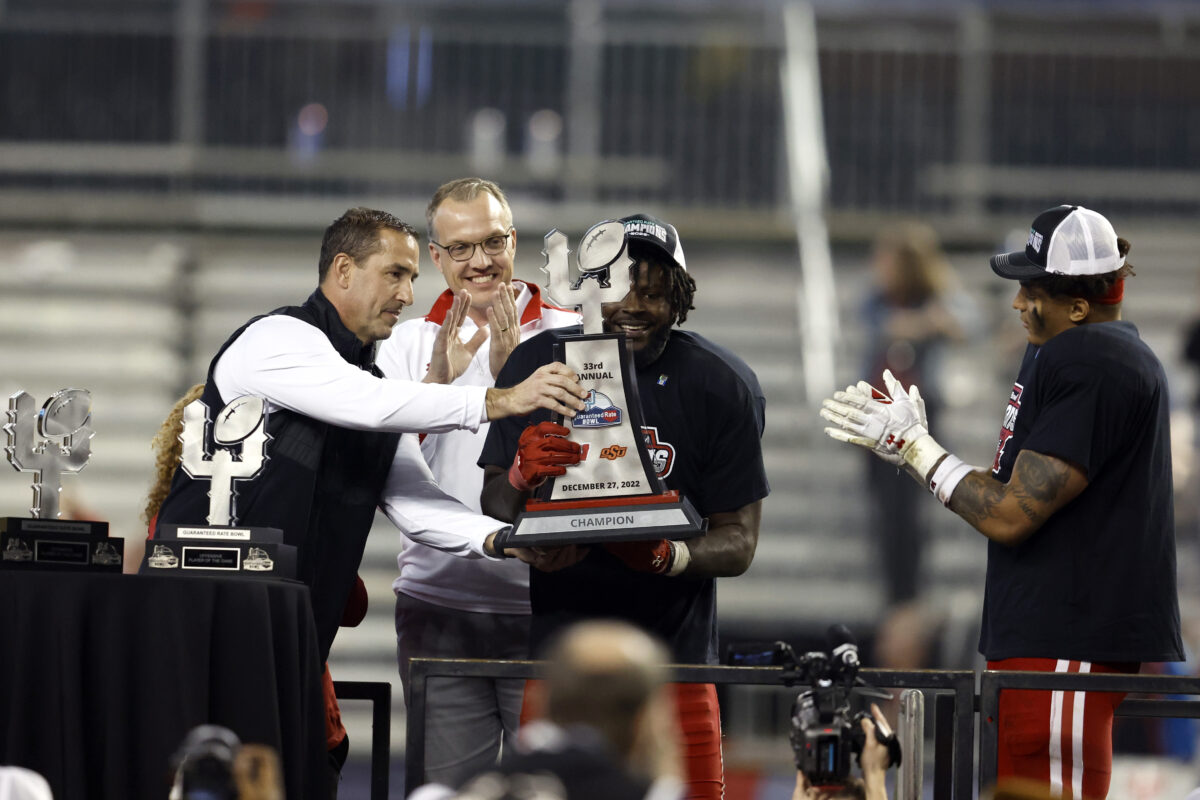Wisconsin is in the midst of a red-hot stretch on the recruiting trail. It seems every night Head Coach Luke Fickell tweets his famous video to signal another commitment is imminent.
Fickell and his staff did an admirable job closing the 2023 recruiting class and in the transfer portal when they arrived on campus last winter. They were dealt a tough hand, as Wisconsin’s recruiting department had fallen off from when it was clicking from 2019-2021. But Fickell was able to flip a few of his Cincinnati commitments and keep the class from falling apart entirely after the coaching change was made.
That is often the case in today’s college football landscape. A new head coach arrives at a program and must scramble to keep the current class together. The transfer portal helps greatly in that regard, as USC’s Lincoln Riley and LSU’s Brian Kelly showed what is possible for a first-year head coach with portal resources available.
Now that Wisconsin is in the midst of the 2024 class with 13 total commitments and six since the beginning of June, I thought it would be a good time to look at how the start of this class compares to what Paul Chryst achieved during his time at the helm.
Two messages will be sent in this exercise. The first: Fickell and his staff are off to a solid start and fans have the right to be excited about the momentum that’s been carried from his hiring. The second: despite its current ranking, this is not one of Wisconsin’s best classes of all time yet. That will not be the case until a volume of four-star recruits are added to the mix.
Fickell’s first full class sits No. 15 nationally after last night’s addition of OT Colin Cubberly. The group has two four-star recruits, good for a Blue Chip Ratio of 14%. The average player rating sits at 88.01. Again, all solid marks for a first class.
But how do those numbers compare to the recruiting classes of the Chryst era?
The national ranking is the highest ever, technically. But that can be attributed to the volume of players. For example, Alabama sits one spot behind Wisconsin in the rankings but only has eight commitments, has a Blue Chip Ratio (BCR) of 87.5% and an average player rating of 94.11.
The BCR of 14% would rank fifth among Chryst’s classes, behind 2023 and the great three-year stretch from 2019-2021. The average player rating of 88.01, on the other hand, would rank third behind 2021’s 89.31 and 2019’s 88.21.
Here is the full breakdown of this year’s class and its direct comparison to 2015-2023:
- 2024 (so far): 13 commits, No. 15 nationally, 14% BCR, 88.01 average player rating
- 2023: 15 commits, No. 58 nationally, 20% BCR, 87.32 average player rating
- 2022: 15 commits, No. 44 nationally, 13% BCR, 87.66 average player rating
- 2021: 21 commits, No. 16 nationally, 42% BCR, 89.31 average player rating
- 2020: 20 commits, No. 26 nationally, 25% BCR, 87.83 average player rating
- 2019: 19 commits, No. 28 nationally, 21% BCR, 88.21 average player rating
- 2018: 20 commits, No. 46 nationally, 5% BCR, 86.48 average player rating
- 2017: 18 commits, No. 39 nationally, 11% BCR, 85.82 average player rating
- 2016: 26 commits, No. 35 nationally, 11% BCR, 84.96 average player rating
- 2015: 19 commits, No. 41 nationally, 5% BCR, 85.5 average player rating
It should be noted that 2023 was a mixture of Fickell and Chryst, with Fickell flipping a few of his four-star Cincinnati commitments. A key takeaway here should also be the time it took for Chryst’s classes to crack an average player rating of 88. Fickell’s first class is already at that point, with improvement sure to come in the future. If anything, Wisconsin’s current 2024 group should signal a strong floor under Fickell with the ceiling still unknown.
There are still months to go before the 2024 cycle reaches its conclusion. Given the talk of recruiting analysts, it’s fair to expect Wisconsin to land several more blue-chip prospects during that time. So this piece is by no means making conclusions about how the class will finish.
But the general message is this: don’t be fooled by the No. 15 ranking nationally. Wisconsin does not currently have a better recruiting class than Alabama. If the recruiting cycle ended today, it would only be the program’s third-best since 2019.
If it does surpass recent Wisconsin classes, I’ll be the first person to note that fact. But the class cannot be lauded as the best in program history until is filled with more blue-chip prospects.
